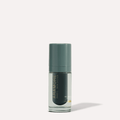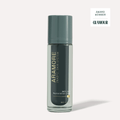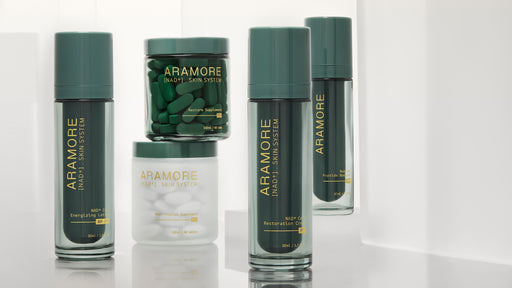Everyone ages. That’s not up for debate. Normal skin aging over time is impossible to avoid, whether from extrinsic (external) sources like the sun’s UV radiation or from intrinsic (internal) sources like routine cell decay. That said, your body has an innate capacity for growth and renewal in order to prolong skin longevity. That is why we see that people of the same age can have very different skin.
Often, the focus in managing aging skin is on trying to simply “cover up” the signs of aging—attempting to hide them for a disappointingly short time—instead of considering the whole body system and working with your cellular and extracellular mechanisms. However, a comprehensive approach including diet, exercise, suncare, skincare, and supplements can effectively navigate the cellular and molecular mechanisms that underlie skin aging. A few recent papers have pointed out the importance of exercise on NAD+ and the maintenance of youthful attributes (Physiological Reports).
Longevity researchers for skin have focused on a number of diverse and important areas related to the aging process: boosting of the cellular metabolism, stabilization of the extracellular matrix, antioxidant support, and restoration of lipids and epidermal hydration.

Jump-Starting the Cellular Metabolism
Your skin cells’ metabolism—that is, their ability to generate the energy, materials, and nutrients that they need to continue to function correctly—requires one very important molecule: NAD+. In case you haven’t heard of this little guy, NAD+—known among organic chemists as nicotinamide adenine dinucleotide—plays a crucial function in every living cell.
Anna Mandinova, MD, PhD, of the Harvard University Stem Cell Institute and Massachusetts General Hospital, will publish her work in the coming months on how NAD+ and its cofactors activate dormant stem cell networks in older human skin. These stem cells were then better able to replenish the skin’s visible epidermal layer, and this process all starts with NAD+!
… Well, technically, it all starts with NAD+ precursors, compounds that lead to NAD+ production.
Antioxidant Support
Higher levels of inflammation are associated with normal human aging. Ah, everyone’s least favorite aging process: inflammaging. It doesn’t take too many mental jumps to realize how inflammaging can accelerate the process of aging and, in a cruel cycle, how aging can increase the frequency of inflammaging. In a whole-system approach to longevity skincare, antioxidant support would be critical for maintaining gains made by improved cellular metabolism.
Oxidation, inflammation’s lesser known sibling, contributes to the aging process through a chemical reaction based on its namesake, oxygen. Oxidation is a biologically necessary process that nonetheless produces “free radicals,” destructive and reactive molecules that can cause massive damage to the cells of organisms. Antioxidants bind to these free radicals and remove them from the body, so it’s no wonder that antioxidants are crucially important in protecting skin from oxidative damage over time. An ideal whole-system approach would include antioxidant support from a variety of sources and ingredients to maintain healthy skin cells.
Luckily, there exist a number of compounds that both work synergistically with the aforementioned NAD+ precursors and function on multiple levels as antioxidant support. Hydroxytyrosol is a “secret weapon” antioxidant that can be taken orally. Derived from the olive fruit, it is one of the most potent natural antioxidant substances known to science, with an ORAC antioxidant value of over 40,000 (Daru). Fisetin occurs naturally in strawberries, persimmons, grapes, and other foods, and, when taken as a dietary supplement, has been shown to reduce the amount of senescent cells, which increase during aging and damage healthy cells. Dietary fisetin also extends the lifespan of animals in addition to its antioxidant properties (The Lancet). Holy basil, already common in traditional Indian ayurveda, contains flavonoids, powerful antioxidant compounds with additional immune system benefits (Nutrition & Cancer). Turmeric has been known to promote a healthy response to inflammation for millenia (Nutrition Journal). And, of course, vitamins C and E provide significant antioxidant protection, among other benefits (Nutrients).
Hydration Restoration & Stabilizing the Extracellular Matrix
It’s not just what happens inside the cell that impacts aging. The extracellular matrix, made largely of collagen and elastin, is the non-cellular scaffolding in your skin’s tissues that not only holds everything in place, but also releases compounds that maintain your skin’s chemical stability. Any whole-system approach to aging would need to promote your body’s natural extracellular matrix repair system.
And, as you might guess, wrinkles and a lack of skin moisture go together. Dry skin leads to a lack of fluid balance, which breaks down this extracellular matrix and causes wrinkles to form. Glycosaminoglycans like hyaluronic acid are one way to fight this process. Oral ingestion of hyaluronic acid can promote collagen synthesis, repair, and hydration, and help skin retain moisture and reduce the appearance of fine lines and wrinkles in the face (Journal of Evidence-Based Complementary & Alternative Medicine). Teenagers have four times as much hyaluronic acid as their elders, and it shows! Another dietary supplement, astaxanthin, derived from algae, has also been clinically shown to preserve the skin’s water-retention capacity and skin viscoelasticity and texture towards characteristics associated with a younger age, and also exhibits DNA repair properties (Journal of Dietary Supplements). These compounds can work synergistically with the NAD+ metabolism and antioxidants to play an important role in reducing the appearance of wrinkles and other symptoms of aging skin.
Whole System Skincare
To effectively manage the aging process on multiple levels, multiple solutions need to come together. NAD+ precursors, compounds with multi-level and synergistic effects, and an overall systems biology approach would all be critical facets of this new frontier of anti-aging skincare.
From exercise and healthy diet to boosting NAD+—which supports DNA repair and cellular metabolism, promoting tissue-based collagen synthesis, and integrating whole-body immune and antioxidant support—a whole-system approach has the potential to enhance your body’s natural repair and maintenance systems to harmonize your skin from the inside out.
For more information or to tell us how excited you are about the potential of this approach (we are too!), visit www.aramoreskincare.com







